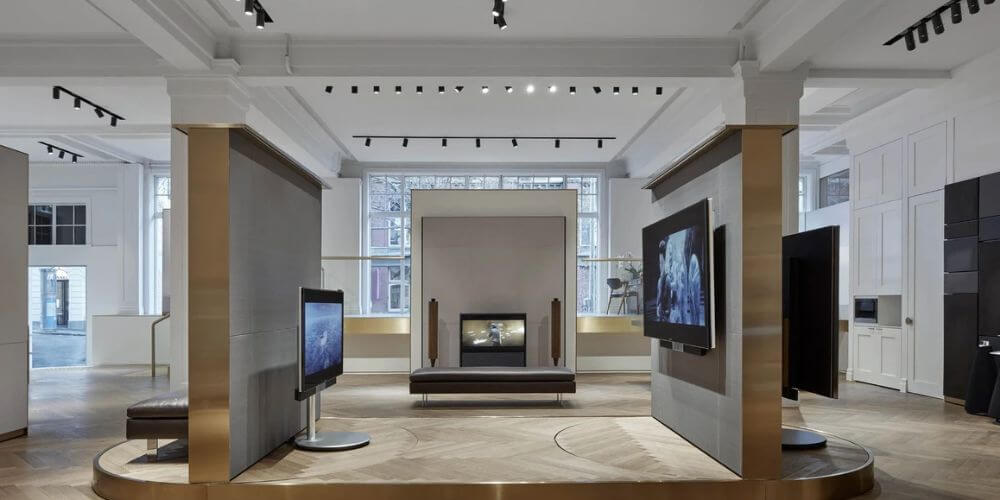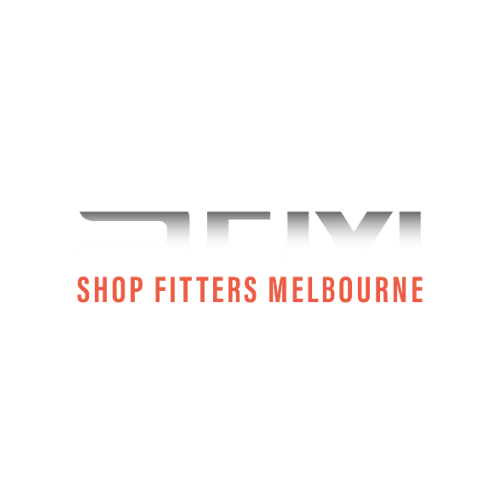
About the author: Phil Petrone
Phil Petrone, with over three decades of experience, stands at the helm of Shop Fitters Melbourne, innovating in commercial fit-outs and construction, and driving the growth of its associate, Melbourne Constructions.
A Shopfitter's Guide to Creating Multi-Sensory Shopping Experiences for Profit
- Reading time: 6 minutes and 55 seconds

Being in the trade for many years now, shops will never cease to amaze me. It’s interesting how a store’s atmosphere affects your customers’ decisions to purchase your products or avail of your services. Imagine walking into a bakery and being greeted by the irresistible aroma of freshly baked bread, or exploring a clothing store where interactive touchscreens invite you to dive deeper into the brand’s story. Don’t you feel that irresistible urge to spend money? This is the magic of interactive shop fitting. These experiences stick with us, turning ordinary shopping trips into memorable journeys.
In today’s competitive retail landscape, standing out is more crucial than ever. Retailers face the challenge of not just attracting customers but also creating an environment that encourages them to stay, explore, and, ultimately, buy. The solution? Multi-sensory shopfitting. By engaging customers’ senses, retailers can create immersive experiences that not only captivate attention but also foster brand loyalty and drive sales.
As a shopfitter, I understand the profound impact of well-executed multi-sensory design principles. In this blog post, I’ll guide you through the intricacies of leveraging the five senses to craft profitable and unforgettable retail experiences that captivate customers and fuel brand loyalty.
Table of Contents
The Power of Multi-Sensory Experiences in Shop Fitting
Our senses play a huge role in shop fitting, and I’ve seen how it has changed the way business owners plan and set up their retail spaces. The science behind this approach is rooted in the way our brains process and respond to sensory stimuli. By engaging multiple senses simultaneously—sight, smell, touch, sound, and even taste—we can enhance memory formation, and emotional connection, and ultimately influence purchase decisions.
The numbers speak for themselves. Studies have shown that multi-sensory experiences can increase brand recall by up to 80%, a statistic that underscores the significance of this approach in today’s competitive retail landscape. The “Sensory Marketing: The Multi-Sensory Brand-Experience Concept” study emphasises the crucial role of sensory cues in shaping consumer emotions, willingness to purchase, and the overall brand experience.
One particular project that exemplifies the power of multi-sensory marketing stands out in my memory. A local coffee shop enlisted my services to create an immersive atmosphere that would set them apart from the competition. We started by incorporating the rich aroma of freshly roasted beans, which wafted through the air as soon as customers stepped through the door. This scent was paired with the soothing tones of soft jazz, creating an atmosphere that was both welcoming and comfortable.
But we didn’t stop there. Interactive touchscreens allowed customers to explore the origins of their favourite blends, while the warm hues of the lighting and natural wood accents created a sense of comfort and warmth. The result? A space that delighted all five senses, fostering a deep emotional connection with the brand and driving a significant increase in sales and customer loyalty.
This project exemplifies the profound impact multi-sensory experiences can have on a retail space. By carefully curating each sensory element, we crafted an environment that transcended mere transactions, transforming the coffee shop into a destination where customers could indulge in a truly memorable experience.
Shop Fit Outs to Engage Each Sense In the Shopping Experience
Have you ever walked into a store and felt an instant connection? Perhaps the lighting was warm and inviting, the colours were vibrant and uplifting, or the scent of freshly baked bread filled the air. Maybe the music was perfectly chosen, or the displays were so inviting that you couldn’t resist reaching out to touch the products. This, my friends, is the magic of shopfitting done right.
As a shopfitter, my goal is to create immersive retail experiences that captivate customers from the moment they step through the door. By carefully engaging each of the five senses, we can craft environments that leave lasting impressions and drive sales. Here’s how engaging each sense can transform a retail environment:
Sight
Visual merchandising is a cornerstone of successful shopfitting. From strategic lighting that highlights products to carefully curated colour schemes that evoke specific emotions, every visual element contributes to the overall ambience. I’ve seen and experienced how effective visual merchandising can draw customers in and guide them through a space.
In one project for a high-end clothing boutique in Melbourne, we used interactive displays and touchscreens to allow customers to explore the brand’s latest collections, creating a dynamic and engaging experience. The result was a significant increase in dwell time and conversion rates.
Smell
Scent marketing is a subtle yet potent tool. Selecting the right scent can evoke specific emotions, solidify brand identity, and even sway purchasing decisions. I remember working with a local bakery where we carefully introduced the aroma of freshly baked bread throughout the space. The enticing scent not only drew in passersby but also created a sense of warmth and comfort for customers, encouraging them to linger and indulge.
Touch
People are naturally curious and tactile. High-quality materials with varying textures—think the smooth coolness of metal against the warmth of wood—create an experience that entices customers to pick up, explore, and connect with your products. In one boutique we designed and built, introducing interactive product displays where customers could feel the fabric quality led to a noticeable uptick in purchases, proving the value of touch in the retail experience.
Sound
The soundtrack to your store shouldn’t be an afterthought. Background music can set the mood, influence customer behaviour, and create a memorable atmosphere. Upbeat tempos can energise, while calmer music can encourage browsing. Think about your target audience and the overall vibe you want to create. I’ve worked with clients to curate playlists that align with their brand identity and target demographic, creating a harmonious backdrop that enhances the overall experience. Beyond music, consider incorporating soundscapes, such as the gentle crashing of waves for a beachwear brand, to transport customers to a specific environment.
Taste
While not applicable to all retail settings, incorporating taste elements can be a powerful strategy for businesses in the food and beverage industry. Offering product samples or incorporating tasting stations allows customers to experience products firsthand, heightening their senses and creating a memorable connection with the brand.
By crafting a multi-sensory experience through shopfitting, you’re creating a retail space that fosters emotional connections with your customers. This translates to increased engagement, brand loyalty, and ultimately, a thriving business. So don’t underestimate the power of appealing to all five senses to gain profit for your business!

Implementing Multi-Sensory Design: A Shopfitter’s Toolkit
As a shopfitter, crafting multi-sensory retail environments blends artistic vision with scientific insight. This process demands a profound grasp of the target market, acute sensitivity to the brand’s essence, and a pragmatic strategy for navigating the intersection of innovation and budgetary limits. But where do you even begin? Here’s my toolkit to help you craft a multi-sensory experience that sings to your target audience:
| Aspect | Description | Personal Experience |
|---|---|---|
| Customer Journey | Emphasise the importance of deeply understanding the target audience and their preferences to tailor the multi-sensory experience effectively. | In a boutique children’s bookstore project, I created interactive story corners with soft, tactile mats and ambient soundtracks, catering to both kids and their parents. |
| Brand Identity | Multi-sensory elements should enhance and reflect the brand’s essence, ensuring a cohesive and authentic experience. | For an artisanal coffee shop, I chose to infuse the aroma of freshly ground coffee beans, rustic wooden décor, and a playlist of vintage jazz to reflect its heritage. |
| Budget and Feasibility | Address the challenge of designing within financial constraints and the practicality of implementing various elements, prioritising those with the highest impact on the customer experience. | Working on a fashion retailer’s revamp, I installed cost-effective LED lighting to mimic natural light and curated a custom scent, enhancing the luxury feel within budget. |
While creativity is essential, budget and feasibility are equally important considerations. As a shopfitter, I’ve learned to think strategically about where to allocate resources for maximum impact. Sometimes, simple yet thoughtful touches can make a world of difference. By approaching each project with a customer-centric mindset, a deep respect for brand identity, and a practical approach to budget and feasibility, I’ve been able to create immersive retail environments that captivate audiences, drive sales, and foster lasting brand loyalty.
As shop fitters, what do we do?
As we’ve explored throughout this blog, the power of multi-sensory experiences in retail spaces is undeniable. By carefully curating each sensory element—sight, sound, smell, touch, and taste—we can create immersive environments that transcend mere transactions and forge lasting emotional connections with customers. From the subtle scent of coffee enticing customers into a bakery to the strategic use of lighting and textures in a fashion outlet, each element plays a crucial role in creating a memorable shopping experience that drives profit.
The multi-sensory revolution in retail is here to stay, and those who embrace it will undoubtedly gain a competitive edge in today’s crowded marketplace. So, whether you’re a seasoned retailer looking to revitalise your brand experience or an entrepreneur just starting, I encourage you to unlock the full potential of multi-sensory shopfitting and partner with our team here at Shop Fitters Melbourne.
Shop Fitters FAQ
In Australia, the process for obtaining council approval for a shop fit-out involves:
- Development Application (DA): Required for major structural, layout, or usage changes.
- Complying Development Certificate (CDC): For simpler, low-impact fit-outs that meet specific criteria.
- Change of Use: Necessary for converting the space’s purpose (e.g., retail to restaurant), typically requiring a DA.
- Heritage/Conservation Areas: Extra approvals may be needed for shops in these zones, affecting design and materials.
- Consult Local Council: Essential to determine specific requirements, including DA, CDC, or other approvals.
- Occupational Certificate: Required to confirm regulatory compliance before starting construction.
Always engage with your local council early in your planning process, or visit Business Victoria to know more about securing permits and approvals for your shop fit-out.
Shopfitters like us here at Shop Fitters Melbourne, specialise in tailoring your retail environment to maximise both efficiency and functionality, whilst enhancing your brand’s visual appeal. Our team offers custom designs and layouts to ensure your store efficiently utilises every square metre, tailored to your unique business requirements. From the initial concept to the final installations, including bespoke fittings and ergonomic equipment, our shopfitting team aims to transform your space into a narrative that connects with your customers.
As a seasoned shop fitter, my key advice is to meticulously plan and communicate. Define your fit-out scope and goals, engage stakeholders for insights, and focus on a detailed design. Accurately budget your costs and timeline, choosing a contractor who offers the best balance of price and quality. Ensure all regulatory approvals are in place. Effective stakeholder communication and minimising operational disruption are vital for a smooth process. Success hinges on thorough planning, selecting the right team, and clear, ongoing communication.


